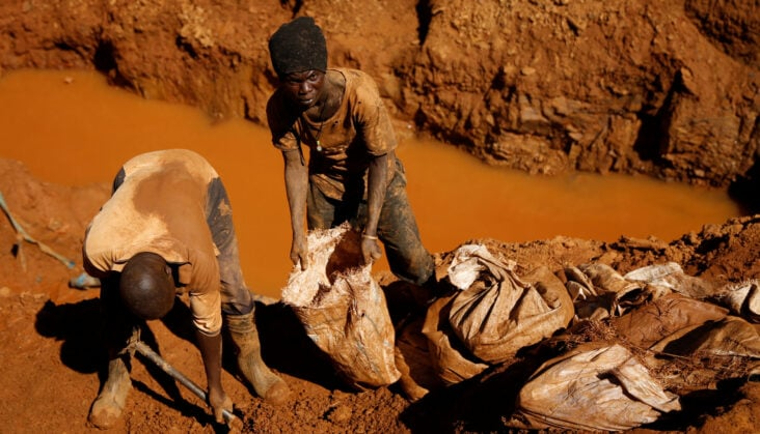3.0 Committee Findings
3.1 Mineral Leakages
There was an acknowledgement by most of the stakeholders that interacted with the Committee that there are leakages of minerals, both precious and base minerals. The quantum could not be ascertained but estimates indicate that this runs into millions of American dollars. The leakages were prevalent across all minerals, with the gold sector at the top, because there are many players involved that include artisanal and small-scale miners, millers, gold buyers and large-scale producers. At the same time, gold can easily be extracted from the ground using rudimentary methods.
3.2 Gold Leakages
The Government of Zimbabwe set a target of USD4 billion worth of revenue to be generated by the gold sector by 2023. Whilst the country remains focused on achieving its goal, a lot of gold is allegedly being smuggled out of the country due to a number of factors which include but not limited to the following:
3.2.1 Delays in Payment to Gold Producers
The Committee was informed by small-scale producers that Fidelity Gold Refiners, the sole buyer of gold, takes more than one week to pay producers after surrendering of gold. This is not amenable to the economic well-being of the small-scale producers, because they require their money in the shortest possible period. As a result, the small-scale producers were selling their gold to unregistered buyers who offer cash upon delivery of the gold. Gold smugglers prefer to sell gold in external markets where they are guaranteed cash payments and not bank transfers. Therefore, buyers would then smuggle the gold out of the country using undesignated exit points and thus robbing the country of thousands of dollars.
3.2.2 Porous Land Borders
When the Committee visited Beitbridge Border post, it was informed by ZIMRA officials that there was a stretch of 230 kilometres of the borderline encompassing Zimbabwe, Mozambique and South Africa, which was poorly manned by law enforcement agencies in Zimbabwe. Along that borderline there were over fifteen well-known unregistered exit and entry points between the three countries. Smuggling was rife at these points and was a source of gold leakages among other commodities. The law enforcement agencies, which include the ZRP and Zimbabwe National Army (ZNA), were unable to control these illegal crossing points because they do not have vehicles and the roads are impassible. In addition, there was no network coverage in these border lying areas, which made it difficult for law enforcement authorities to coordinate their efforts effectively along the border. The security forces requested for vehicles, tents, drones, testing and communication devices and the establishment of a reaction team to arrest would-be smugglers.
3.2.3 Inadequate Equipment and Personnel at the Ports of Entry and Exit
At the official ports of entry, the Committee was informed by border officials that they did not have modern scanners to detect gold, diamonds and other minerals that may be smuggled out of the country. Officials at ports of entry have limited knowledge of the characteristics of minerals such as gold and diamonds. ZIMRA outlined that it was in the process of recruiting a metallurgist and a geologist, so that they could be stationed at the land borders to assist in the identification and verification of minerals being exported or those confiscated for attempted smuggling.
At RGM International Airport, two attempts were made to smuggle gold out of the country. In the first case, the gold was intercepted before leaving the country and in the second case the gold was recovered at O. R. Tambo International Airport in South Africa. The major cause of the leakage was due to collusion by airport officials. Following the two incidents, the Committee was informed that security measures had been tightened to reduce attempts of smuggling. These included the purchase of modern scanners and instituting stringent access measures by airport officials to various parts of the airport. In the absence of insider threat (collusion), the security system at the airport was robust.
Continued next page
(127 VIEWS)


